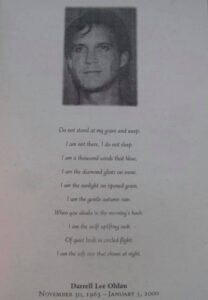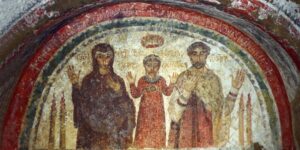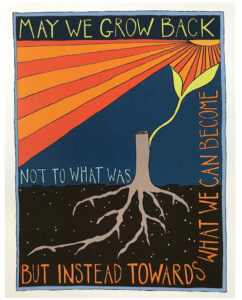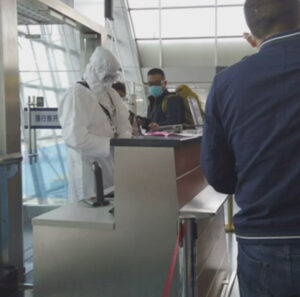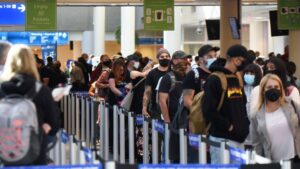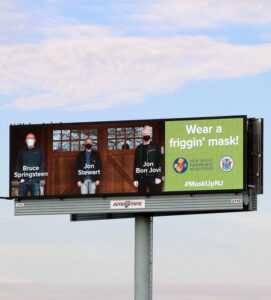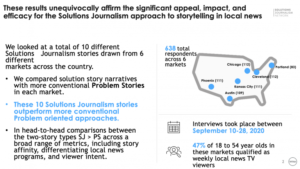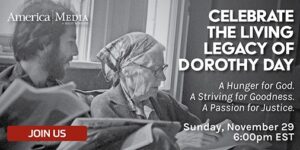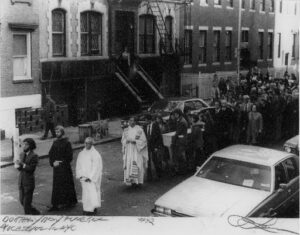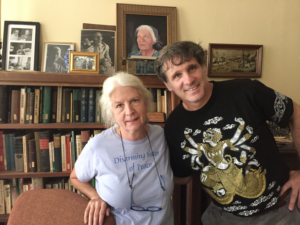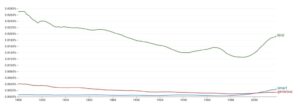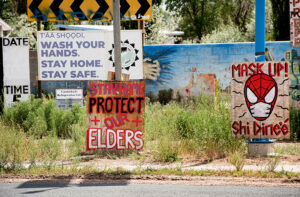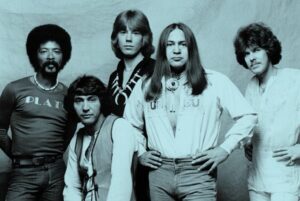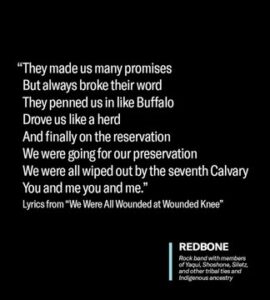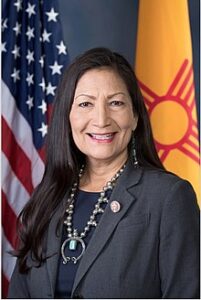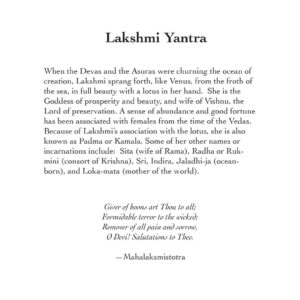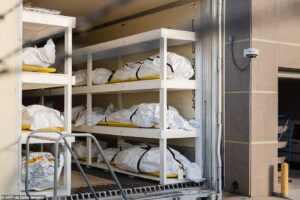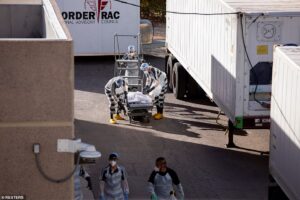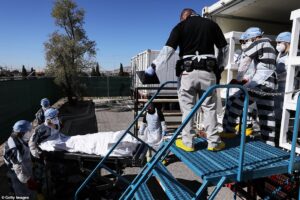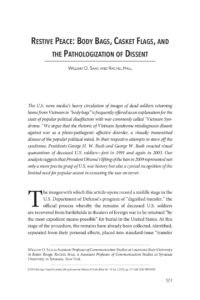D’s Day ☆҉
November 30, 2020On your birthday and transition days, the veil is a little thinner.
I ℒℴve you. ❥
I * M I S S * Y O U .¸.´*.¸.•´*.¸.•
Everyday.
Happy Birthday, my sweet brother.
Gemini Moon
November 29, 2020Full Moon in Gemini with a penumbral lunar eclipse is on Monday, November 30 at 2:29AM Mountain Standard Time (MST).
Use this time to honor change and to focus on what you wish to dream up for yourself for the future. Despite what might be happening around you or in the greater collective, you can take some space to feed your own container with the energies that will better support you. Think of infusing your intentions with inspiration, beauty, determination, optimism, progress and anything that brings your experience of life to a higher level.
Make sure you do whatever you can to stay out of fear as fear will take you down into a very negative place where you can easily lose your direction and land in an uncomfortable fog.
Eclipses always potentiate the full and new moon times and give an extra boost of energy to whatever is happening in your life as well as your personal intentions. So engage in something positive and be disciplined about lending your creative optimism to the future.
We are moving into a very active time where you will need to pay close attention to your personal direction, your truth, your trust and your discipline.
Blessings,
Lena
A penumbral lunar eclipse occurs when the Sun, Earth, and the Moon are imperfectly aligned. When this happens, the Earth blocks some of the Sun’s light from directly reaching the Moon’s surface and covers all or part of the Moon with the outer part of its shadow, also known as the penumbra.
🌕
The Moon in Gemini person has a light touch socially and has an instinct for putting others at ease. Air sign Moons have a way of relating that’s spacious, with lots of room for fresh ideas.
Born with the Moon in Gemini, you are likely to be a curious individual, with an active, versatile mind. Gemini is an Air sign, governing communication, the exchange of information or ideas, and the protocols with which social organization occurs.
Accordingly, you may find that you have an innate need to know as much as possible about the world around you, and may have a talent for numbers, speech or the written word.
Jesus wasn’t a Christian.
Image credit: Catacombe Di San Gennaro (detail of the fresco of the Catacomb of Saint Gennaro), paleo-Christian burial and worship sites, Naples, Italy.
“If we look at texts in the hundred years preceding Emperor Constantine’s edict, it was unthinkable that a Christian would fight in the army. The army was killing believers. Christians were on the bottom but, by the year 400, the entire army had become Christian, and was now killing the pagans. In a two-hundred-year period, Christians went from being complete outsiders to directing the inside! Once Christians joined the inside group, they had to defend their power.
Before the imperial edict of 313 that pushed Christians to the top and the center of the Roman Empire, values like nonparticipation in war, simple living, and love of enemies were common within the faithful community. The church at that point was still countercultural and non-imperial—a social movement for the reign of God. After 313 we lost that free position. Christianity increasingly accepted, and even defended, the dominant social order, especially concerning war, money, and authority.
Imperial Christianity is always about power. It seldom teaches about nonviolence, forgiveness, inclusion, simplicity, mercy, love, compassion, or understanding in a primary way. Yet Spirit-led movements within Christianity have flourished and continued to emphasize the values that defined the early Church and made it so threatening to the social order.
I believe that any future church will be led by the Spirit back to those foundational values, making it a much flatter and more inclusive community.”
-Fr Richard Rohr
Center for Action & Contemplation
Pope Francis
November 28, 2020Illustration by Najeebah Al-Ghadban; photographs by Getty Images
‘If we are to come out of this crisis less selfish than when we went in, we have to let ourselves be touched by others’ pain.’
‘We need a politics that can integrate and dialogue with the poor, the excluded and the vulnerable, that gives people a say in the decisions that affect their lives.’
‘It is all too easy for some to take an idea—personal freedom—and turn it into an ideology, creating a prism through which they judge everything. | We cannot return to the false securities of the political and economic systems we had before the crisis.’
Pope Francis: A Crisis Reveals What Is in Our Hearts
[Full Piece.]
In this past year of change, my mind and heart have overflowed with people. People I think of and pray for, and sometimes cry with, people with names and faces, people who died without saying goodbye to those they loved, families in difficulty, even going hungry, because there’s no work.
Sometimes, when you think globally, you can be paralyzed: There are so many places of apparently ceaseless conflict; there’s so much suffering and need. I find it helps to focus on concrete situations: You see faces looking for life and love in the reality of each person, of each people. You see hope written in the story of every nation, glorious because it’s a story of daily struggle, of lives broken in self-sacrifice. So rather than overwhelm you, it invites you to ponder and to respond with hope.
These are moments in life that can be ripe for change and conversion. Each of us has had our own “stoppage,” or if we haven’t yet, we will someday: illness, the failure of a marriage or a business, some great disappointment or betrayal. As in the Covid-19 lockdown, those moments generate a tension, a crisis that reveals what is in our hearts.
In every personal “Covid,” so to speak, in every “stoppage,” what is revealed is what needs to change: our lack of internal freedom, the idols we have been serving, the ideologies we have tried to live by, the relationships we have neglected.
When I got really sick at the age of 21, I had my first experience of limit, of pain and loneliness. It changed the way I saw life. For months, I didn’t know who I was or whether I would live or die. The doctors had no idea whether I’d make it either. I remember hugging my mother and saying, “Just tell me if I’m going to die.” I was in the second year of training for the priesthood in the diocesan seminary of Buenos Aires.
I remember the date: Aug. 13, 1957. I got taken to a hospital by a prefect who realized mine was not the kind of flu you treat with aspirin. Straightaway they took a liter and a half of water out of my lungs, and I remained there fighting for my life. The following November they operated to take out the upper right lobe of one of the lungs. I have some sense of how people with Covid-19 feel as they struggle to breathe on a ventilator.
I remember especially two nurses from this time. One was the senior ward matron, a Dominican sister who had been a teacher in Athens before being sent to Buenos Aires. I learned later that following the first examination by the doctor, after he left she told the nurses to double the dose of medication he had prescribed — basically penicillin and streptomycin — because she knew from experience I was dying. Sister Cornelia Caraglio saved my life. Because of her regular contact with sick people, she understood better than the doctor what they needed, and she had the courage to act on her knowledge.
Another nurse, Micaela, did the same when I was in intense pain, secretly prescribing me extra doses of painkillers outside my due times. Cornelia and Micaela are in heaven now, but I’ll always owe them so much. They fought for me to the end, until my eventual recovery. They taught me what it is to use science but also to know when to go beyond it to meet particular needs. And the serious illness I lived through taught me to depend on the goodness and wisdom of others.
This theme of helping others has stayed with me these past months. In lockdown I’ve often gone in prayer to those who sought all means to save the lives of others. So many of the nurses, doctors and caregivers paid that price of love, together with priests, and religious and ordinary people whose vocations were service. We return their love by grieving for them and honoring them.
Pope Francis is the head of the Catholic Church and the bishop of Rome.
Jennifer Rose
‘Tune into the trees, the waters, the birds flying by … There’s so much more peace, beauty & love than what’s being broadcasted. Real life is where you are.’
Zoomsgiving…for those you love.
November 25, 2020Merci d’exister.
Creation by Jen Bloomer, Radici Studios
A Thanksgiving Prayer
Don’t get revenge when wronged, but seek reconciliation.
Don’t repay violence with violence, but seek creative and transforming nonviolent alternatives.
Don’t focus on external conformity to moral codes, but on internal transformation in love.
Don’t love insiders and hate or fear outsiders, but welcome outsiders into a new “us,” a new “we,” a new humanity that celebrates diversity in the context of love for all, justice for all, and mutual respect for all.
Don’t have anxiety about money or security or pleasure at the center of your life, but trust yourself to the care of God.
Don’t live for wealth, but for the living God who loves all people, including your enemies.
Don’t hate your enemies or competitors, but love them and do to them not as they have done to you—and not before they do to you—but as you wish they would do for you.
[Center for Action & Contemplation]
In the COVID days ahead,
‘…give us the courage of warriors,the strength of saints,the love of new mothers,the resilience of gravity,the patience of breath,the freedom of children.’
♡
H A P P Y T H A N K S G I V I N G
Columbia Journalism Review
Apocalypse Then and Now
by Julian Brave NoiseCat
Winter 2020
To be Indigenous to North America is to be part of a postapocalyptic community and experience. Indigenous journalists have always grappled with earth-shattering stories: either as historical background to current events or in the deep despair of the still-unfolding legacy of Indigenous dispossession, displacement, and death that brought nations like the United States and Canada into being. This perspective tests the limits of journalism, asking reporters to cover marginalized subjects unfamiliar to most readers with an eye on the people, histories, and systems buried and erased by colonization—all without losing the thread of the narrative.
Kyle Whyte, a Citizen Potawatomi philosopher and professor of environment and sustainability at the University of Michigan, described the challenge facing Indigenous journalists succinctly: “In the space of a short piece that’s widely accessible, how do you write in a way that includes a structural analysis and a sense of history that many readers don’t initially understand?”
For insight, I called Candis Callison, an associate professor at the University of British Columbia’s School of Journalism and a member of the Tahltan people. She described her preferred approach as “systems journalism”—a methodology that treats news items not as isolated events but as “windows into what’s happening in underlying systems and structures.” The narratives we tell about our past and present delineate possible avenues for future action, Callison said. She urges journalists to consider how white and colonial perspectives frame our current society as normative and permanent, erasing the history of genocidal colonialism that brought us here. Systems journalism often brushes up against established methods, however. “The forms and styles that are dominant in journalism practice,” Callison told me, “don’t always allow us to get at the historical context that is vital.”
Our stories, field notes, and communities ask a great deal of us as journalists—and, particularly, as Indigenous journalists and journalists of color—especially in moments of grave consequence, like the present. It’s hard, and in some cases impossible, to give yourself, your audience, your community, your sources—and perhaps also your land, your water, your relations—everything they want and deserve in your work. Indigenous experiences and perspectives challenge the notion that a press corps equipped with notepads and recorders can capture the whole truth. More often than not, I’m convinced that reality defies the disciplined space of stories, waging an epistemic resistance against the tyranny of language, text, and form—something we Indians can relate to.
https://www.cjr.org/special_report/apocalypse-then-and-now.php
Millions of Americans: ‘COVID?’ 🤷♀️
AP
Defying warnings, millions in the US travel for Thanksgiving
Millions of Americans took to the skies and the highways ahead of Thanksgiving at the risk of pouring gasoline on the coronavirus fire, disregarding increasingly dire warnings that they stay home and limit their holiday gatherings to members of their own household.
Those who are flying witnessed a distinctly 2020 landscape at the nation’s airports: plexiglass barriers in front of the ID stations, rapid virus testing sites inside terminals, masks in check-in areas and on board planes, and paperwork asking passengers to quarantine on arrival at their destination.
More than 88,000 people in the U.S. — an all-time high — were in the hospital with COVID-19 as of Tuesday, pushing the health care system in many places to the breaking point, and new cases of the virus have been setting records, soaring to an average of over 174,000 per day.
Orlando International Airport
AXIOS
If you are gathering with people outside your household, at the very least:
- Open windows if you can, or sit outdoors.
- Wear masks when you aren’t eating.
- Use separate bathrooms if possible.
- Don’t share towels.
- Use HEPA filters.
- Limit the duration of your visit.
Bruce Springsteen: “Teamed up with some fellow New Jerseyans to encourage everyone this holiday season to wear a friggin’ mask. Let’s all come together and #MaskUpNJ so we can get back to what we do best – singing along and dancing together.”
Journalism, Professors & Solutions
November 24, 2020Poynter.

This is a general view of the Associated Press London bureau newsroom, showing cable transmitters in foreground in an undated photo. (AP Photo)
Professors, consider volunteering in a local newsroom during the winter break
Student media is a lifesaver, and The New York Times wants you to send them your best coronavirus work
I’m wondering if any of you might want to consider volunteering over the long holiday break for a stint at your local TV or newspaper? I know that getting back into the newsroom game helps me stay current with trends (and know that yes, even in the few months that I’ve been away, things have changed!).
If any of you do this or have done this, I’d love to hear about it, especially if there are takeaways for other professors. amelia.nierenberg@nytimes.com
In the meantime, it’s November! You are so close to the end of the semester, and with a new presidency decided and positive vaccine news last week, it feels like an end to the unknowns is coming — and not a moment too soon.
“Hey, local TV news execs, read this: By a healthy margin, viewers — especially younger viewers — prefer solutions-focused stories to problem-focused pieces.”
-David Boardman
Journalist/educator. Dean, Klein College of Media and Communication
Thanksgiving Harm
November 23, 2020Reduction Steps for Those Who Will Travel or Gather Anyway
There is no way to eliminate risk, but anything one does to reduce it is better than nothing
by, Zeynep Tufekci, sociologist and writer
Millions of Americans are traveling for Thanksgiving. In doing so, they’re increasing the chances of catching or spreading Covid-19—not just themselves but to others. A wedding reception in Maine ended up causing 177 cases and seven deaths—but none of the deaths were among people who attended the wedding, but rather, among their contacts.
It’s never too late to decide not to travel or choose not to meet with large groups of people not in one’s household during the holidays. There is excellent news regarding vaccines and therapeutics, and we may be very close to turning the corner on this pandemic. One can always have Thanksgiving in spring and be grateful for having survived a pandemic! As I recently wrote in The Atlantic, it’s time to hunker down!
[…]
I’d especially urge people to consider that hospitals are running out of not just space, but of qualified people. This report is a sobering read from a hospital that was otherwise very-well prepared. We can expand space within facilities and even set up field hospitals. But there is no way to mass manufacture doctors and nurses. With a nationwide surge underway, workers from one region cannot travel to bail out another, as they were able to in spring. Keeping infections down means that hospitals can do a better job taking care of the already overwhelming numbers of people who need care.
[…]
Traditionally, communal eating is the center of Thanksgiving festivities. However, it is also one of the highest risk activities, as one cannot be masked while eating, and people tend to speak loudly around a table. Eating together doesn’t have to be the centerpiece of the day, though. It’s possible to eat separately and make the highlight of the day a different group activity. A gathering outside around a fire pit would be great, for example. It’s fun and, being outdoors, it’s safer, too. Playing a board game where people keep their masks on is another alternative. Keeping masks on is especially important for multi-generational gatherings, or for groups that include higher-risk people. The minimal set-up could be that the elderly could eat separately from the rest of the group. If they must join the dining table, they can do so while wearing the highest-grade mask they have. Risk reduction is important for everyone, but it’s most important for those at most risk. It’s much better to have a much more festive gathering in spring or summer, even if it makes this Thanksgiving a little more awkward.
Getting tested before or after a group meeting is tricky. On the one hand, of course testing is a good precaution to take, and a positive test result means you absolutely should isolate! However, one can test negative even while having Covid-19, because the disease hasn’t progressed enough—and then be infected and infectious just a day or two later. I wouldn’t consider a negative test a licence to do anything differently. In other words, even if you test negative, take all the precautions that you can: stay home and don’t travel for Thanksgiving, or, if you decide to do so, quarantine and take all the harm-reduction steps you can anyway.
The same precautions apply for the return trip: travel in the least risky way possible, keeping in mind that contact with other people poses the highest risks. When you return, quarantine. The gold-standard period for quarantine is two weeks, but don’t think in binary terms. Don’t think that if you can’t do two weeks, you may as well not quarantine. Two weeks is better than a week, a week is better than nothing. When you return, it’s best to act like you might be infected.
What if you get lucky by exposing yourself to a high-risk situation and emerging untouched by Covid-19? Don’t assume that your luck will hold for the Christmas season. Every encounter is an independent risk. There is no such thing as “a winning streak” with this disease. Getting lucky once is no guarantee of being lucky a second time.The changing winter conditions and the explosion in infections means that any meeting right now is much higher risk than before, when the weather was warmer and case numbers were lower. We now have three vaccine candidates with excellent results and vaccinations will start as early as December. We have effective therapeutics—they are in short supply but manufacturing is ramping up. We will have better weather once we get through this winter season. We are so close to the finish line. The more precautions we take, the better our chances.
[Please share.]
Dr. Tufekci was getting it right back in January before many epidemiologists.
NYTimes:
How Zeynep Tufekci Keeps Getting the Big Things Right
‘Dr. Tufekci, a computer programmer who became a sociologist, sounded an early alarm on the need for protective masks. It wasn’t the first time she was right about something big.’
by Ben Smith
Credit…Felix Hörhager/Picture Alliance]
Dorothy Day.
With author David Brooks & publisher Robert Ellsberg.
“In anticipation of our upcoming commemoration of the the 40th anniversary of Day’s death on November 29th 2020, we remember the eulogy given by Father Geoffrey B. Gneuhs, O.P. at the funeral of Dorothy Day, Nativity Church, New York City, December 2, 1980:”
In her book The Long Loneliness, Dorothy wrote, “All my life I have been haunted by God.” And where did this haunting God lead her? To a life of simplicity and poverty with the poor, to solidarity with the outcasts—today in this city of New York there are more and more people homeless as mental hospitals close and social services are cut back, while at the same time this country spends $170 billion a year for armaments.
This haunting God led Dorothy to jail because
she spoke and acted for the rights of women and men, of laborers and workers; she was led to jail because she stood with the farm workers, and to prison because she would not tolerate the militarist posture of this country. She was led ultimately to community, to love.
This being haunted by God became for her a stupendous and extraordinary pilgrimage, a pilgrimage of faith. For sure, the Sermon on the Mount sums up the entire life and spirit of Jesus, and it is an invitation which Dorothy with consummate conviction accepted. She realized that love is an exchange of gifts: the gift of faith, and she in turn offered the gift of her life lived in faith, given for us and thousands of others. The Sermon on the Mount, along with the 25th chapter of St. Matthew, the cornerstone of the Catholic Worker movement, is not some general guide or optional outline. It is the very expression of the flesh and blood of Jesus—the Incarnation of Truth.
In our country, those who have so much, too much, are apt to declare “Well, the poor you’ll always have with you”—not realizing or hearing Jesus speak the Truth in the Sermon, not hearing the Truth call out. That is precisely the point. Christ the poor one is always with us!
Dorothy, with dear Peter Maurin, of whom she wrote, “He was my master and I was his disciple, he gave me a way of life,” realized this Truth so well. She said, “What a simplification of life it would be if we saw Christ everywhere we go.” Did you give me clothes? Did you give me food? Did you give me shelter in the empty room in your home, of your rectory or priory?
To love, for her, was not a duty but a privilege. And should it not be for all of us? It begs the question: Do we want to meet Christ? Do we really believe? We do not have to go far to see Christ, to invite Christ, and to be invited by Christ. The invitation is offered for loaves and fishes, more often at our houses, soup and bread and tea. To those of us who doubt, to us Christians who waver, Dorothy showed by her love that, yes, the Gospel is possible. The Gospel is so possible it is now and cannot wait for the future. The moment is ours. Dorothy seized the moment given her. The Truth called her forth and she accepted the invitation—solidarity with those without the arrogance and dominance of wealth, power, and prestige. She lived the Truth with all its starkness and abruptness, with all its freedom and its love.
She wrote, “We cannot love God unless we love each other and to love we must know each other—and we will know Him in the breaking of the bread—and then we are not alone anymore. Heaven is a banquet and life is a banquet too, even with a crust, where there is companionship.” Love is not meant to be a half measure, nor is it meant to be easy. Dorothy on her pilgrimage knew that violence and war are not the way of Christ, that love is the only measure. Thus Truth again called her forth and she accepted the invitation to speak out against war and the crucifixion of humanity by nuclear armaments.
Wouldn’t it be a tragedy for us to equivocate or to dilute the spirit of her life?
She was utterly convinced of the rightness of pacifism and of nonviolent resistance to statism. And never, even at age 83, did she waver in the clarity of her vision of Truth and in her conviction.
Today the romance of war and power and individualism ignores the capacity of the human imagination imaged in God to see and to live the Gospel of gentle personalism and unconditional love. And Dorothy loved life, believed in life, enjoyed life. It was the very life of a child that welled up in her the invitation to the pilgrimage. In St. John’s Gospel, Jesus says, “I have come to bring life, to bring life more abundantly.”
Remember when Jesus was on trial for his actions of Truth? He said to Pilate, “Mine is not a kingdom of this world. If my kingdom were of this world, my men would have fought…. I came into the world for this: to bear witness to the truth and all who are on the side of truth listen to my voice.”
And what was Pilate’s reply? “Truth,” he said, “what is truth?” In a truthless world, some have struggled to listen to His voice and to continue to speak Truth—the Truth of Christ. And one was Dorothy: in her commitment to justice, to freedom and to peace, her resistance to the kingdoms of this world, and her unflinching commitment to the belief that love will redeem the world, Dorothy had a dream of this Truth, the dream became a vision, and the vision became a light for the world. The Truth guided her pilgrimage and she admitted, “We confess to being fools and wish that we were more so.” Oh, thank God for such foolishness!
And so Dorothy, the pilgrimage is over. You’re home now. The Truth invites you to the eternal banquet.
Dorothy Day’s granddaughter sentenced to prison for nuclear base break-in
Martha Hennessy, a granddaughter of Dorothy Day, the founder of the Catholic Worker movement, was sentenced Friday (Nov. 13) to 10 months in prison for breaking into Kings Bay Naval Base in Georgia two years ago to protest its stockpile of nuclear weapons.
Hennessy’s was the lightest sentence given for the break-in at the Navy base 40 miles south of Brunswick, Georgia, on April 4, 2018, in which Hennessy, 65, was joined by six other Catholic pacifists. Together they are known as the Kings Bay Plowshares 7, named after the Plowshares anti-war movement founded 40 years ago by Daniel and Philip Berrigan and six others.
On Thursday, Carmen Trotta, of St. Joseph Catholic Worker in New York City, was sentenced to 14 months in prison, while Clare Grady of the Ithaca Catholic Worker was sentenced to 12 months. Both have spent their lives at Catholic Worker houses in New York state, which house and feed the needy. All were also sentenced to probation and will be required to repay the Navy base a total of $33,500 in damages.
Hennessy is the only one of Dorothy Day’s nine grandchildren to dedicate herself to what Catholics call “works of mercy.”
Hennessy — in a statement right before her sentencing — said she regarded the action as a religious exercise, likening it to Jesus’ action of overturning the money-changing tables at the entrance to the Jerusalem Temple, as described in the New Testament gospels.
“I had no criminal intent,” she said. “I wanted to prevent a nuclear holocaust.”
:)
Biden should start his inaugural speech by saying, “Well, that was weird.”
-Frank Lesser, Former Emmy-winning writer for The Colbert Report
[twitter post]
Universally shared.
Order.
Disorder.
Reorder.
Fr Richard Rohr, Center for Action and Contemplation:
Order becomes opportunity, stability melts into movement and change, status-quo government gives way to a revolution of community and neighborliness, policy bows to love, domination descends to service and sacrifice, control morphs into influence and inspiration, and vengeance and threats are transformed into forgiveness and blessing.
Contemplation: a long loving look at the real.
♡
Smart, generous and kind.
The Ngram tracks words used in books over the last 200 years. Here’s what a million authors and a billion readers think:
|
‘We may not each be called to the same work in the same ways, but we share the responsibility to repair the conscience of our nation, to stand up and stand in the gap for those who have lost hope, lost their way, lost their voice.’ Science of Mind Magazine named Stevenson their Spiritual Hero of the Year for 2020. |
In an adapted excerpt from Rohr’s A Spring Within Us, Father Richard Rohr says that mystic “simply means one who has moved from mere belief systems or belonging systems to actual inner experience. All spiritual traditions at their mature levels agree that such a movement is possible, desirable, and even available to everyone.”
“A mystic is an ordinary person who does ordinary things and experiences these moments of profound union with The Source, Mirabai Starr says.
Another sign you may be a natural mystic? An extreme affinity for nature.
Mirabai Starr: “That’s why there’s the term “Mother Earth.” For a lot of people with mystical inclinations, it’s a felt relationship with the earth, as a cherished loved one, as a relative. It’s about fully embodying our humanity and our relationship with the natural world, but that’s still a mystical experience, because we, our separate ego self dissolves into that vast mystery of The One.”
Practicing ‘Full Presence’
November 20, 2020Navajo Nation
Learn how cultivating trust and community allowed Health Initiative to be effective partners in the region.
Dr. Sriram Shamasunder and his organization, HEAL Initiative, stood in solidarity with Navajo healthcare workers as they fought a COVID outbreak through the spring and summer.
This past summer, when the Navajo Nation was the site of one of the country’s worst coronavirus outbreaks, Dr. Sriram Shamasunder was at Chinle Comprehensive Health Care Facility in Arizona, caring for a Navajo elder in the respiratory care unit. When he was young, the patient had worked in the uranium mines on Navajo land, and he had spent decades drinking water contaminated with the radioactive element. He had poor baseline lung function, and now he had COVID-19. His family could not be there to comfort him. He was isolated and scared.
On harried rounds in the overwhelmed medical center, it was very difficult to be fully present. “I was moving fast. I was wearing goggles, a face shield, an N95 mask,” Shamasunder recalls. He couldn’t speak to the miner in his own language, and he wasn’t intimately familiar with the contours of the man’s life on the reservation. There was a gulf between them that Shamasunder, as his doctor, struggled to cross.
But Shamasunder had not come into the room alone. He was accompanied by Navajo nurses from the local community. “They would just lean over in his ear and speak to him in his own language,” Shamasunder says, “‘I won’t let you go.’ ‘I am from your community, and I’m here to stand with you.’ To bridge that gap is just so powerful.”
Signs encourage safety in the Navajo Nation. Photo credit: UCSF
I think there was a question all of us sat with. What does it mean to lead a purposeful, committed life? What does that look like?
What made HEAL so effective? It may have had something to do with the way HEAL responds to the problem Shamasunder has spent his entire career thinking about: How can the best care be delivered across the human boundaries of language, culture, gender, and religion that arise in our global community? After the technical training of medical school, can young health professionals be trained in the ineffable part of the practice, in leadership, advocacy, and justice?
How can they learn to show up in their full presence?
In May, a disheartening thread of stories about COVID-19 in the Navajo Nation was circulating. Per-capita infection rates soared. Congress had approved $8 billion in coronavirus relief for tribes around the country, but the money did not arrive as committed. It was a cruel echo of the disinvestment that had left the Navajo Nation — an area larger than West Virginia — with just 13 grocery stores and only some 20 ICU beds.
In the wake of this progress, UCSF is compiling a report on the efforts of HEAL and the volunteers in Navajo Nation. Shamasunder’s own reflections, unsurprisingly, have so far taken the form of notes and sketches of new poems that address the work of the health professionals in their full presence, affirming their spirit of partnership and solidarity. He wants to make sure the opportunity to explore those elements of the summer’s efforts is not overlooked — by the medical community, or by HEAL.
And the world must change.
This fall has seen COVID-19 case counts rise around the globe, and the Navajo Nation has not been exempt. In late October, with a surge in New Mexico taking hospitals in Albuquerque beyond their bed capacity, the reservation’s command-control structure re-engaged in planning for case management and potential patient transfers to hospitals all over Arizona and New Mexico. Just this week, after announcing that 34 Navajo communities have “uncontrolled spread” of the disease, the nation’s leadership instituted a three-week lockdown restricting nonessential activities. Shamasunder is trying to coordinate another team of nurses to travel down to Arizona and New Mexico to help. If he is needed, there is no question that he would return to the desert.
Full piece:
Representation matters.
November 19, 2020We are still wounding.
November 18, 2020From the ACLU:
You may have heard “Come and Get Your Love,” but did you know that Redbone’s “We Were All Wounded at Wounded Knee” was banned by several radio stations in the ’70s? This Native American Heritage Month, we honor the group.

Democracy persists.
And just because I played it on the radio so many times, here’s Redbone performing on the Midnight Special in 1974. ‘Come and Get Your Love’ peaked at #5 on The Billboard Hot 100 chart and spent 18 weeks in the Top 40. It landed as the fourth-most popular song on the Hot 100 for 1974. -dayle :)
Debra Anne Haaland (born December 2, 1960) is an American politician serving as the U.S. Representative from New Mexico’s 1st congressional district. The district includes most of Albuquerque along with most of its suburbs. Haaland is a former leader of the Democratic Party of New Mexico. Sharice Davids and Haaland are the first two Native American women elected to the U.S. Congress. Haaland is a member of the Laguna Pueblo people. [wikipedia]
The Hill
by, Rebecca Beitsch
The Biden transition team is in the process of vetting Rep. Haaland for the Interior secretary post.
If tapped by President-elect Joe Biden, Haaland’s nomination would be historic, making her the first Native American Cabinet secretary, overseeing an agency with vast responsibility over tribal issues and public lands.
More than half of the president-elect’s transition team is comprised of women and nearly half of its members are people of color; Biden has also vowed that his new Cabinet and administration will be very diverse and “look like America.”
Lakshmi & Kamala
November 17, 2020Lakshmi Yantra
A letter to Kamala Harris from Cathie Caccia in Sun Valley, Idaho, a revered yoga teacher, spiritual leader, and friend. A beautiful discovery, indeed. -dayle
Dear Kamala
I am a long time student and teacher of yoga. I was continuing to study Lakshmi this morning. You most likely know in the shortest summation Lakshmi is considered the goddess of spiritual and material wealth. Lakshmi is the goddess energy who preserves life. When we consider what it means to live sustainably in this world we are contemplating what it means to incarnate Lakshmi. With Lakshmi’s reappearance, love, generosity, sacred practices, wealth, and fertility return to the world. Another name for Lakshmi is Kamala (lotus-like). This really struck me today!!!! I am beyond grateful the Biden/Harris ticket won the election. There is so much work to be done to restore kindness, balance and right action and more. I am buoyed by the timeliness of Kamala rising. May you embody your name fully and help bring the potent, healing energy of Lakshmi to our country and globe.
Deep bow,
Cathie Caccia
Visit Cathie’s website for yoga instruction (virtual classes during COVID), Shiatsu massage, jewelry, and special events.
about Cathie…
Cathie Caccia began her yogic studies in 1984 and was immediately captivated by the physical, energetic and philosophical aspects of the practice. Her most influential teachers include Rodney Yee, Rod Stryker, Judith Lasater and more. Cathie has extensive training in Yoga, Yoga Therapy, Shiatsu, Acupressure and Massage and began teaching in 1987. Cathie’s classes combine her love of Yoga, Chinese energetics and Sanskrit chanting to support her students in accessing their most essential nature. Cathie is registered with Yoga Alliance as E-RYT 500, she teaches public and private classes, workshops and yoga teacher training. Cathie is a licensed massage therapist with over 1200 hours of training.
“In the spirit of Ha-tha, we must learn how to have one foot on the Sun, with our day-to-day business of living in the world, and one foot on the Moon, tending to the world of the psyche and the spirit.”—Bhavani Maki, The Yogi’s Roadmap
♡
Show the bags, not the graphs.
November 16, 2020Don’t show the COVID graphs, show the COVID victim body bags. -dayle
‘The U.S. news media’s heavy circulation of images of dead soldiers returning home from Vietnam in “body bags” is associated with popular political disaffection with war commonly called “Vietnam Syndrome.”’
[Texas Images: Getty/Rueters]
Restive Peace: Body Bags, Casket Flags, and the Pathologization of Dissent
Abstract
The U.S. news media’s heavy circulation of images of dead soldiers returning home from Vietnam in “body bags” is frequently offered as an explanation for the state of popular political disaffection with war commonly called “Vietnam Syndrome.” We argue that the rhetoric of Vietnam Syndrome misdiagnoses dissent against war as a photo-pathogenic affective disorder, a visually transmitted disease of the popular political mind. In their respective attempts to stave off the syndrome, Presidents George H. W. Bush and George W. Bush enacted visual quarantines of deceased U.S. soldiers—first in 1991 and again in 2003. Our analysis suggests that President Obama’s lifting of the ban in 2009 represented not only a more precise grasp of U.S. war history but also a cynical recognition of the limited need for popular assent in executing the war on terror.
“The number of coronavirus cases in the United States passed 11 million on Sunday. It took 100 days for the nation to log its first 1 million cases; it took just six days to get from 10 million to 11 million. The number of people being hospitalized with covid-19 is also higher. Fearing that the worsening crisis will lead to even more preventable deaths.”
CNN
U.S.
11,163,990 Cases
246,953 Deaths
CNBC/11.16.20
‘Dr. Anthony Fauci warns “it’s not going to be a light switch” back to normalcy even when a Covid-19 vaccine becomes available to the public.
In fact, Fauci recommends people still wear masks and practice social distancing even after getting the vaccine, he told CNN’s Jake Tapper on “State of the Union” on Sunday.
Because “even though, for the general population, it might be 90[%] to 95% effective,” said Fauci, “you don’t necessarily know, for you, how effective it is.” Even at those success rates, about 5% to 10% of people immunized may still get the virus.
“In addition, the protective effect of a vaccine may take at least one month, if not slightly longer,” says Dr. David Ho, a virologist working on developing monoclonal antibody therapies for Covid-19 at Columbia University. (So far, Pfizer said early results showed its two-dose vaccine showed 90% effectiveness seven days after the second dose. Early data on Moderna’s two-dose vaccine showed 94.5% efficacy two weeks after the second dose.)
“Therefore, for the foreseeable future, we will need to continue our mitigation measures, including wearing masks,” Ho says, noting that precautionary measures will likely last “for much of 2021.”
Dr. Bruce Hirsch, an infectious disease specialist at Northwell Health, adds that many people have strong feelings about vaccines and may not take them, which “will impact the general population from being immune to Covid-19 and prolong the threat of the pandemic.”
Fauci predicted to Tapper that most of the country will get vaccinated in the second or third quarter of 2021.
But “we are not going to turn [the pandemic] on and off, going from where we are to completely normal. It’s going to be a gradual accrual of more normality as the weeks and the months go by, as we get well into 2021,” he said.’
Maitrī
Allysha Lavino/Sacred Mystery
“Kindness is often overlooked – we can sometimes forget how PROFOUND and TRANSFORMATIVE it is.
One of the most profound shifts that we undergo as we awaken, is the shift from being told what qualities we should engage, to truly understanding the beauty and magic they embody.
AWAKENING means transitioning from teachers’, parents’ and society’s lessons about sharing, being kind, and saying “Thank You” …
… To the expanded consciousness, where we experience the value in truly living these themes.
KINDNESS BRIDGES THE DIVIDES OF RACE, RELIGION, POLITICS, GENDER, AND ZIP CODES – a bridge that can lead us into a beautiful tomorrow.
Be grateful for the Goodness that we feel when we tap into the energy of loving-kindness.”
🌱
From Walt Whitman.
| UNFOLDED out of the folds of the woman, man comes unfolded, and is always to come unfolded; | |
| Unfolded only out of the superbest woman of the earth, is to come the superbest man of the earth; | |
| Unfolded out of the friendliest woman, is to come the friendliest man; | |
| Unfolded only out of the perfect body of a woman, can a man be form’d of perfect body; | |
| Unfolded only out of the inimitable poem of the woman, can come the poems of man—(only thence have my poems come;) | 5 |
| Unfolded out of the strong and arrogant woman I love, only thence can appear the strong and arrogant man I love; | |
| Unfolded by brawny embraces from the well-muscled woman I love, only thence come the brawny embraces of the man; | |
| Unfolded out of the folds of the woman’s brain, come all the folds of the man’s brain, duly obedient; | |
| Unfolded out of the justice of the woman, all justice is unfolded; | |
| Unfolded out of the sympathy of the woman is all sympathy: | 10 |
| A man is a great thing upon the earth, and through eternity—but every jot of the greatness of man is unfolded out of woman, | |
| First the man is shaped in the woman, he can then be shaped in himself. |
